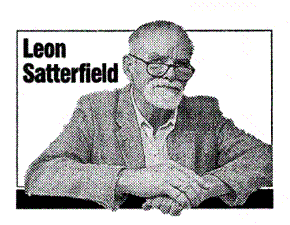So what's the big deal?
That's the response that something in us wants to give to Joe Duggan's story about the final disposition of some Native American bones that had been in the possession of the University of Nebraska.
You may remember the piece. It was in the July 22 issue of this newspaper and it was a pretty grim story. It went like this:
Three years ago, university officials revealed that back in the mid-sixties the school had burned some of its Native American bones—along with "some diseased animal remains"—in an Ag Campus incinerator.
Concerned Native Americans had the understanding in 1998 that the ashes had been scattered on the Ag Campus grounds and that a proper memorial would be erected there.
But Duggan's story said that "now it appears more likely university workers collected the ashes. . .and dumped them" in the N. 48th St. landfill.
The landfill. The garbage dump. No memorials there.
UN-L still intends to put up the memorial on the Ag Campus.
Chancellor Harvey Perlman, who wasn't chancellor in 1998 or in the mid-sixties, said "This whole episode certainly is something that we abhor," then rightly added, "but I don't think. . .this is anything new or startling."
And of course it isn't. Nobody who knows anything about the history of our treatment of Native Americans, nobody who's seen the photographs taken in the aftermath of Wounded Knee, would find anything in the story new or startling.
Judi Morgan, executive director of the Nebraska Commission on Indian Affairs, said the story was part of "a never-ending tragedy of what happened to our most sacred remains."
"That's what they considered our remains, trash," said a Lincoln member of the Santee Sioux. Then, with admirably controlled understatement, he added, "That bothers me."
And still, something in us wants to say, what's the big deal?
Ashes to ashes, dust to dust, and all that? Right?
And it was for a good cause. The bones were originally dug up and studied and displayed in order to further human knowledge. Right?
So what's the big deal?
Let me tell you about a book I just read. It's not a moral or religious treatise. It's only fiction, and not part of a very prestigious genre of fiction at that.
It's a whodunit novel by Tony Hillerman, "Talking God," published in 1989, and by the time you get to the end of the first chapter, you'll have a visceral sense of what the big deal is.
The novel begins in Washington, D.C., in the office of Catherine Morris Perry, a functionary at the Smithsonian National Museum of Natural History. She's just been quoted in the Washington Post for turning down a request from a part-Navajo named Henry Highhawk.
|

The Truth, Mainly
He'd asked that the Smithsonian re-bury its collection of more than 18,000 Native American skeletons. He'd proposed making plaster casts of the skeletons for people to look at.
Ms. Perry told the Post that Highhawk's proposal was impractical "because the public has the right to expect authenticity and not to be shown mere reproductions."
A few days later, Fed Express delivers a big box to Ms. Perry's office. There's a note from Henry Highhawk with it and as she opens the box, she reads it:
"Dear Mrs. Perry:
You won't bury the bones of our ancestors because you say the public has the right to expect authenticity in the museum when it comes to look at skeletons. Therefore I am sending you a couple of authentic skeletons of ancestors. I went to the cemetery in the woods behind the Episcopal Church of Saint Luke. I used authentic anthropological methods to locate the burials of authentic white Anglo types—and to make sure they would be perfectly authentic, I chose two whose identities you can personally confirm yourself. I ask that you accept these two skeletons for authentic display to your clients and release the bones of two of my ancestors so that they may be returned to their rightful place in Mother Earth. The names of these two authentic—"
By this time, Ms. Perry has the box open and "from underneath a clutter of what seemed to be arm and leg bones a single empty eye socket stared back at her."
You've figured it out by now. The bones in the box are those of Ms. Perry's grandparents.
She is, of course, aghast. Reading the passage, I was aghast. I imagine that most of you are aghast right now.
And we know in our gut, don't we, what the big deal is in this case?
So when do we authentic white Anglo types figure out that what's outrageous and ghastly when it happens to one of us is also outrageous and ghastly when it happens to any of the rest of humankind?
Retired English Professor Leon Satterfield writes to salvage clarity
from his confusion. His column appears on alternate Mondays. His e-mail
address is:
leonsatterfield@earthlink.net.
|